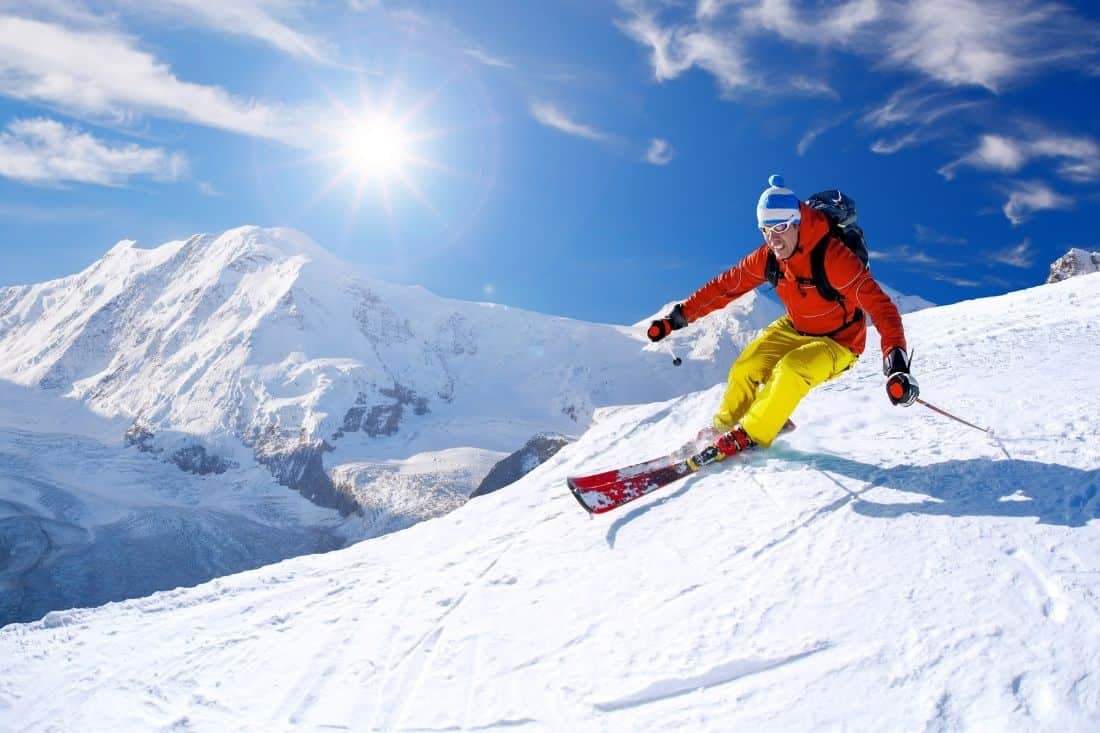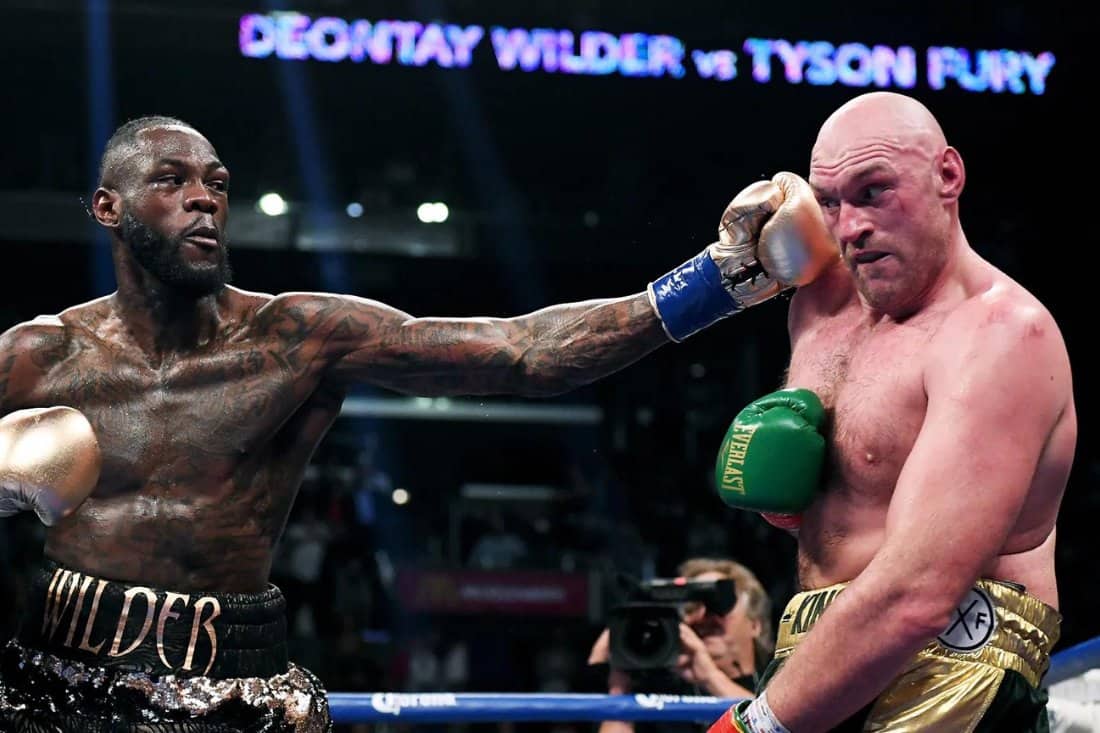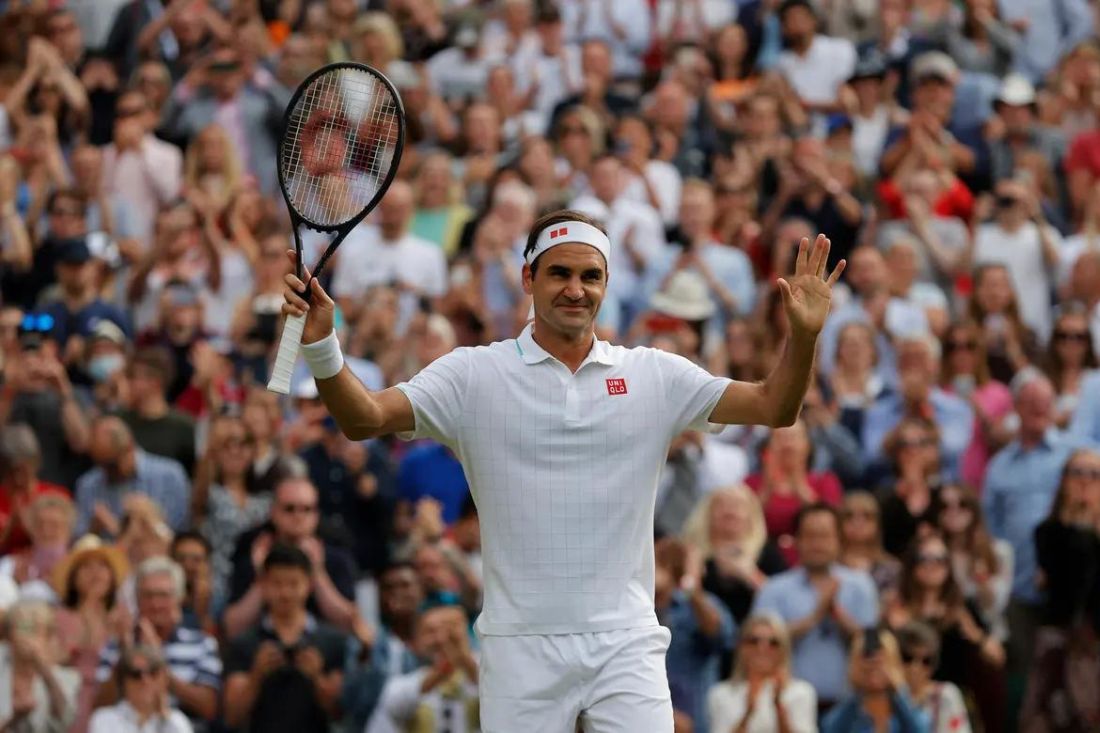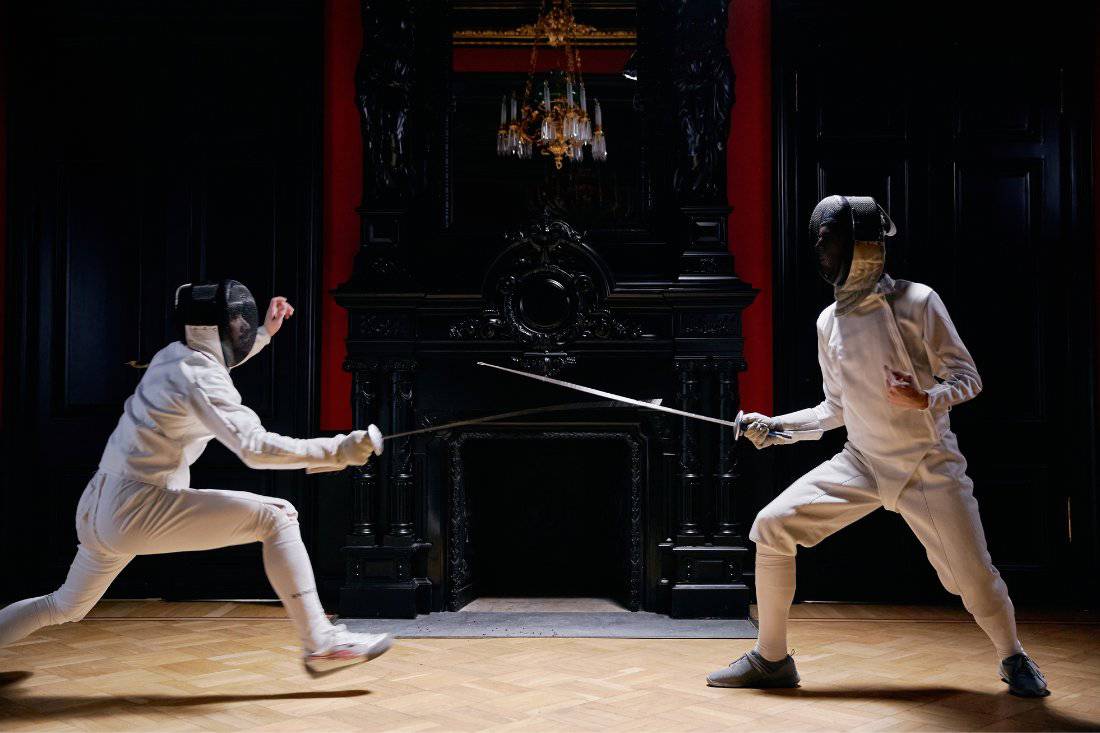It’s the most prestigious and controversial cycling race in the world. Let’s explore it all with these fun facts about the Tour de France!
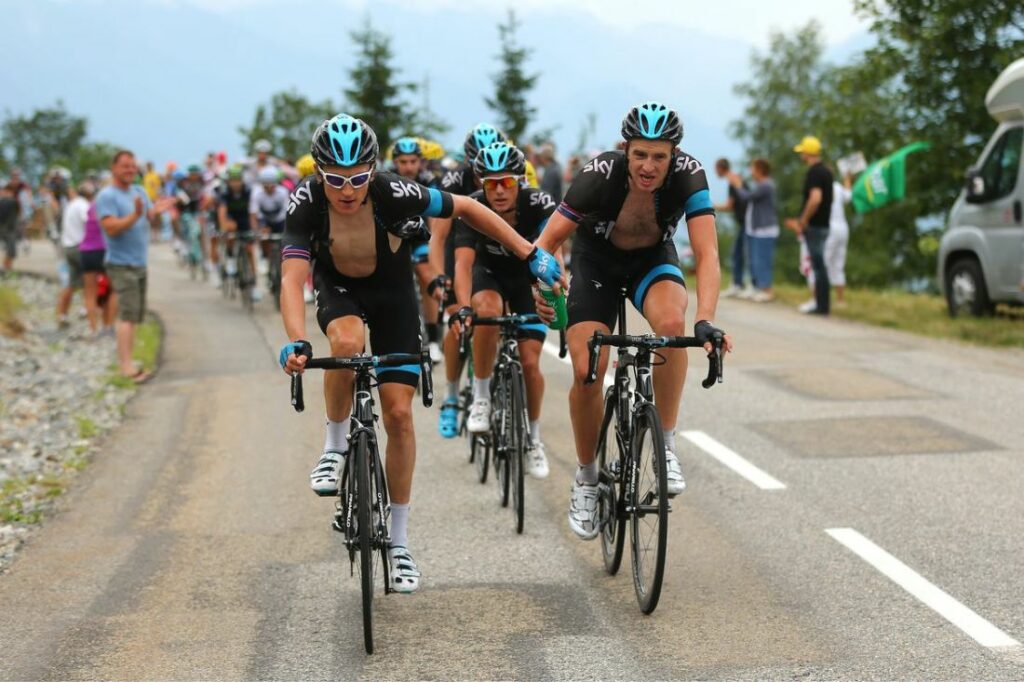
Hairpin turns, brutal climbs, superhuman athletes and loads of scandals, the Tour de France has it all!
Every July, the best cyclists in the world converge upon France to test their endurance, courage, and strength in an effort to win the illustrious title. But how much do you really know about the Tour de France?
With these fun facts about the Tour de France we’ll explore the most famous race stages, the wildest controversies and some of the most impressive records in sporting history. This one is for all of you cycling fans out there!
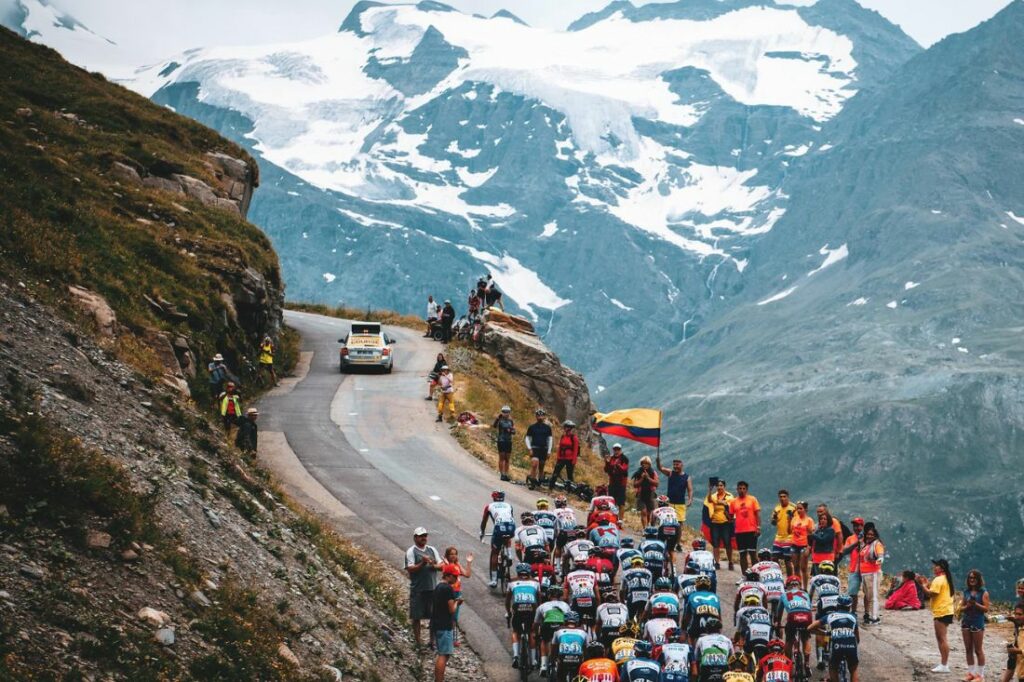
The Tour de France has been held since 1903 but has had a few bumps in the road along the way, including cheaters, doping allegations and the deaths of some riders. Even with all this drama, the excitement of the annual race persists with over three billion viewers annually.
And what about weighted water bottles, cigarettes, and polka dots? All three have a place in the storied history of the Tour de France and we’ll get to the bottom of it all.
As a primer for this year’s race, let’s learn some more Tour de France facts, so when you see the clips online you’ll know what’s actually going on!
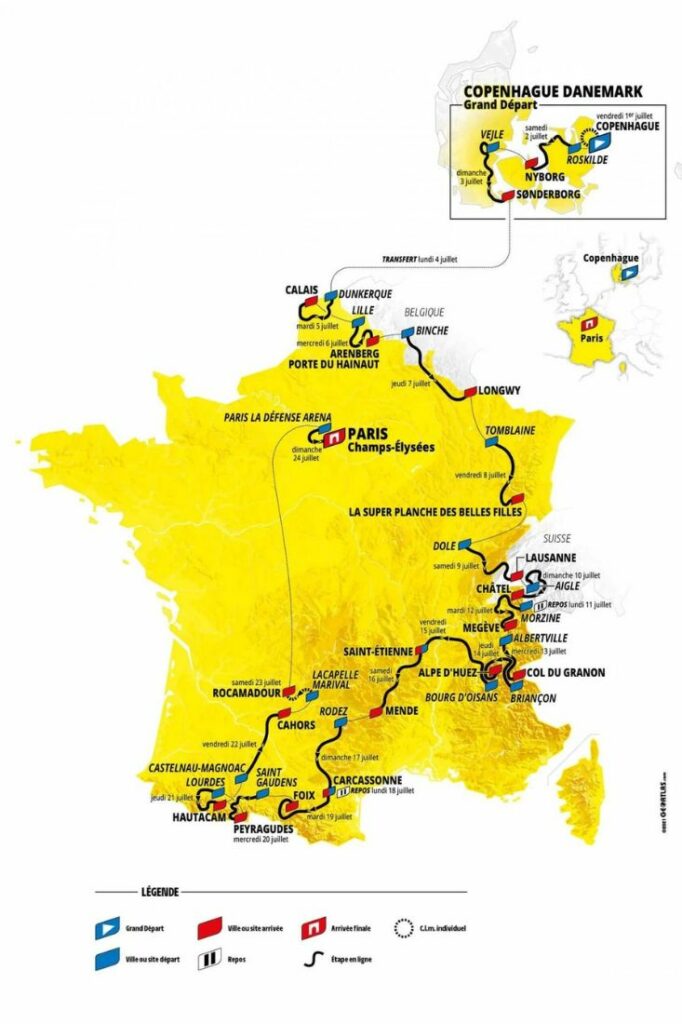
Contents:
23 Fun Facts About the Tour de France
1. Historic route
Even though the route changes quite often, there are some features of the Tour de France that will always remain.
Most certainly the stages that wind up and down the French Alps and Pyrenees will always be a part of the race. And since 1975, every final sprint has sped along the Champs-Elysees in Paris.
2. A July tradition
On1st July 1903, the first Tour de France began in Paris. The 6 stage route saw riders pass through six major French cities in a large loop that hit each corner of the country.
Paris → Lyon → Marseilles → Toulouse → Bordeaux → Nantes → Paris. The first winner was Maurice Garin.
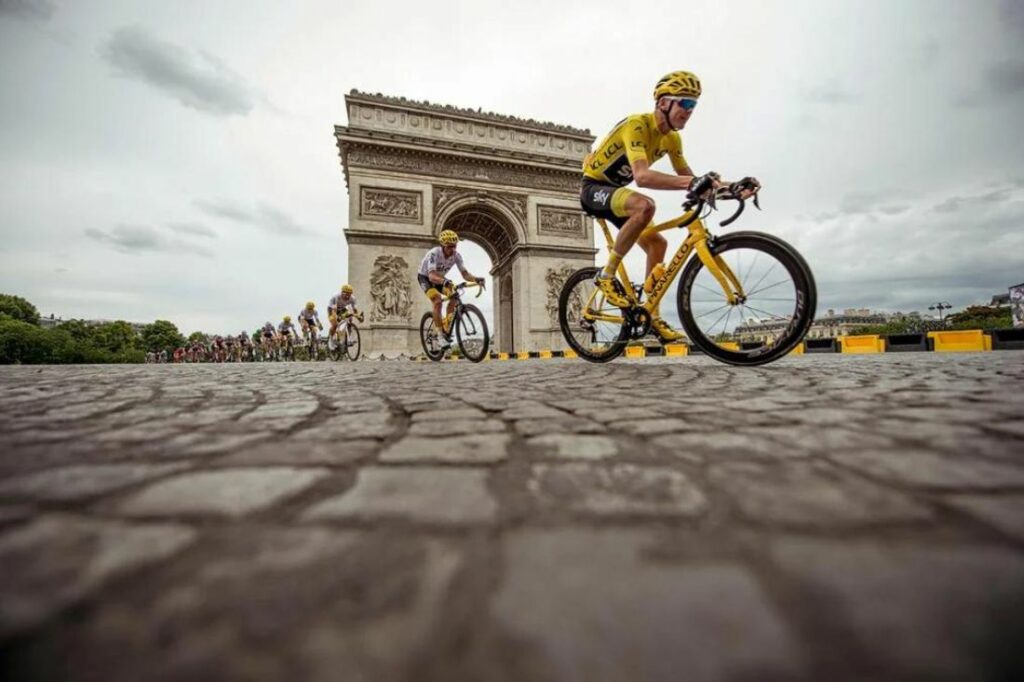
3. The steepest climb
One of the most popular sections that has made repeat appearances in the Tour de France is Alpe d’Huez. This 13.2 km brutal climb sees a gradient of 8.1%.
With over 20 switchbacks and an elevation of over 10,000 ft, you can be sure the rider’s lungs are burning on this one!
4. The longest route ever
The 1926 Tour de France has never been matched in terms of distance covered. The 17-stage race saw an accumulation of 5,745 km (3,570 mi)!
This is even more impressive considering the equipment of the 1920s. In comparison, the 2019 Tour de France covered only 3,460 km (2,150 mi) in 21 stages.
5. The most wins
The cycling legend Eddy Merckx of Belgium holds the record for the most stage wins with 34. With all these stage wins it probably comes as no surprise that Merckx is a five-time winner of the Tour de France (1969, 1970, 1971, 1972, 1974).
However, also sharing the most stage wins with 34 is British legend Mark Cavendish.
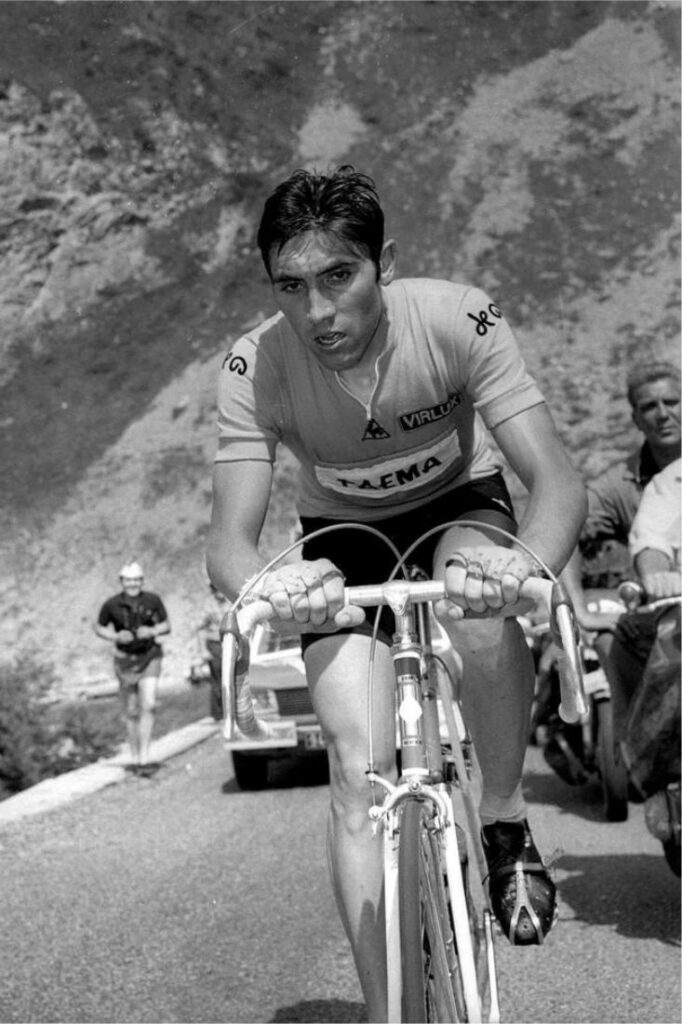
6. The disgraced winner
When you think about the Tour de France, it’s impossible to separate the race from the American cyclist Lance Armstrong. Armstrong won a record seven consecutive Tour de France titles between 1999 and 2005.
However, he was stripped of his titles in 2012 when the US Anti-Doping Agency found that Armstrong used performance-enhancing drugs throughout his career. It’s a scandal that the sport has really struggled to come to terms with as Armstrong was the poster boy for the Tour de France for years.
7. More scandals
While Lance Armstrong may be the most well-known drug cheat to win the Tour De France, many other cyclists have been embroiled in drug scandals as well.
Other Tour de France winners who have failed drug tests include American Floyd Landis, Spain’s Alberto Contador, and Britain’s Chris Froome.
8. Come on, peloton!
No, it’s not just the home exercise company with the perky trainers and mildly annoying commercials, peloton actually means gang in French.
In the Tour de France, the peloton refers to the large group of riders who bunch up during the race and ride together. This allows for consistency, drafting, and communication between riders.

9. Prize money
21 stages, 3,404 km (2,127 mi), 22 teams, 176 riders, 1 winner. The rider who outlasts the rest at the 2023 Tour de France, and can manage the climbs, and has the lowest overall time will take home an incredible €500,000 ($535,000)!
10. The jerseys
During the Tour de France you can spot a few unique jerseys within the peleton. But what do these colorful jerseys, called maillots, signify?
Here’s a rundown: The leader of the overall race will be in yellow. The best sprinter wears green. The best rider under-25 wears white. Most fashionably, the best climber wears red and white polka dots!
11. Spectacular crash
When you have 150+ riders reaching speeds of up to 110 km (65 mi) per hour there are bound to be some devastating crashes.
Look no further than the 2021 Tour de France where two crashes marred the opening stage with two major crashes and 26 cyclists injured.
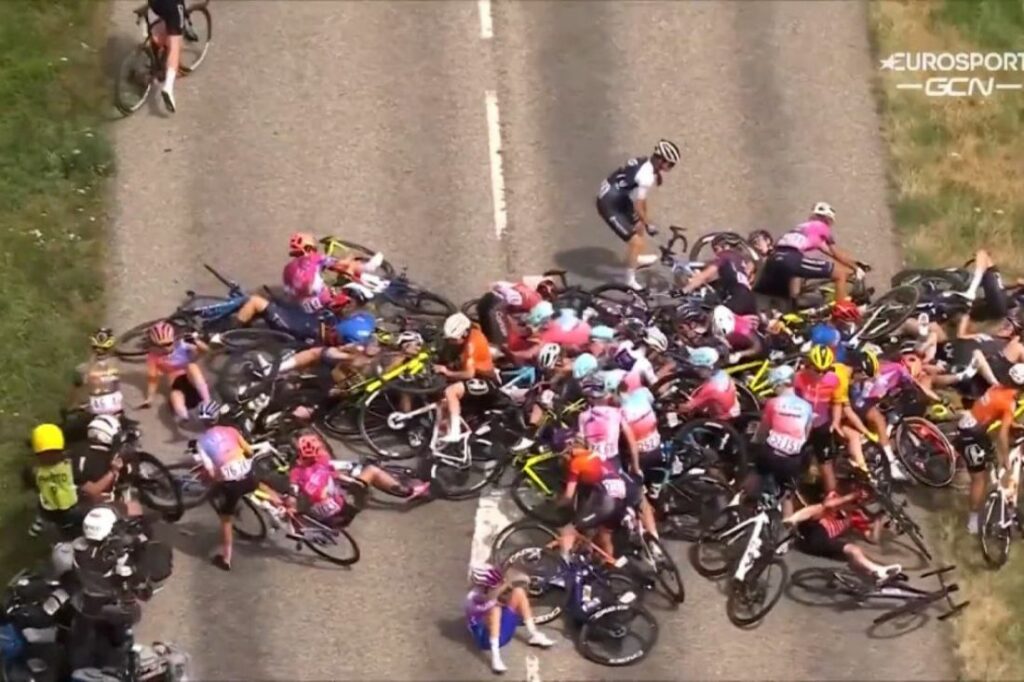
12. Get outta the way!
A tradition of the Tour de France are the spectators lining the streets and cheering on the cyclists. But sometimes they cause huge trouble.
In 1999, Giuseppe Guerini was leading the stage when a photographer got in his way causing a scary crash. Amazingly, Guerini was able to get back on his bike and win the race!
13. Tour tragedies
In the history of the Tour de France, three riders have died during the race. Fabio Casartelli crashed while going downhill at 88 kph (55 mph) in 1995. In 1935, Francisco Cepeda crashed into a ravine.
A more auspicious death was Tom Simpson who died of a heart attack in 1967 after taking amphetamines to help climb Alpe d’Huez.
14. Calorie burner
Try riding your bicycle for six hours straight and you’ll get a sense of just how hard these athletes are working! In fact, the average rider will burn around 7,000 calories per stage.
This is why you’ll see riders being handed food pouches filled with high-density nutrition to keep them fueled as they have to eat throughout the ride.
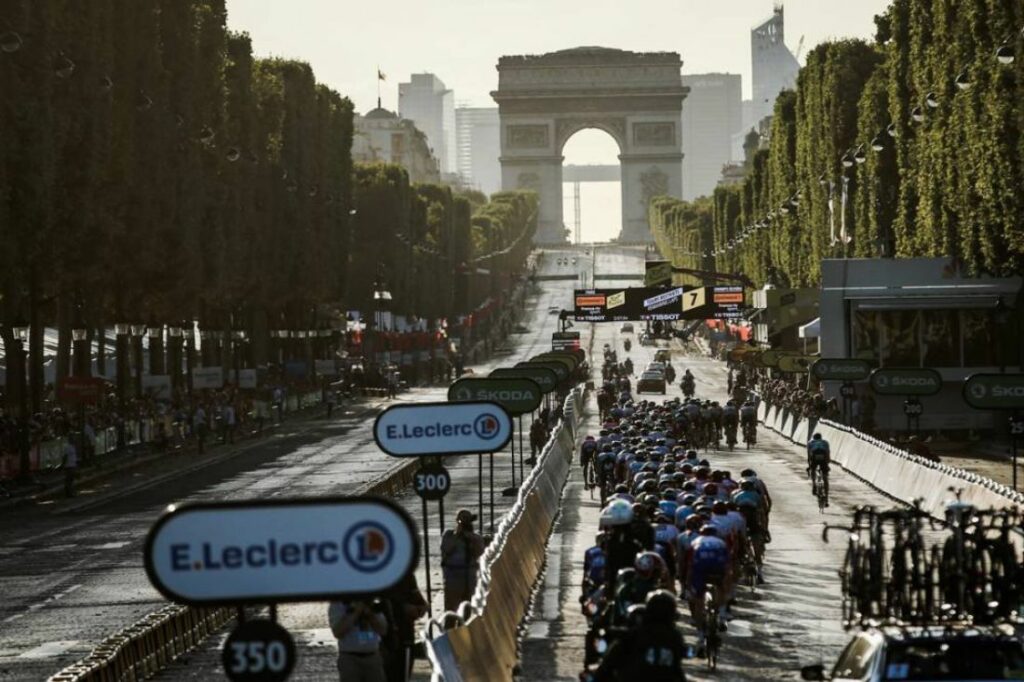
15. We can’t look away
Of course the Tour de France is a grand spectacle of sporting tradition, but did you know that the viewing figures for the race outpace the Super Bowl and the Olympics? Over the 21-day race more than 3.5 billion people will tune in to watch!
16. Smoking and cycling
During the 1920’s riders would share cigarettes before a steep climb, believing that the smoke would open their lungs and allow for a better performance. This was one of the fun facts about the Tour de France that we couldn’t believe!
17. Mercury descending
As we’ve discovered with these Tour de France facts, people will stop at nothing to win the race. The perfect example is Jean Robic in 1947.
Robic, who was known as an excellent climber, would be handed lead mercury disguised in water bottles to go faster on the downhills. Now that’s some cheating ingenuity!
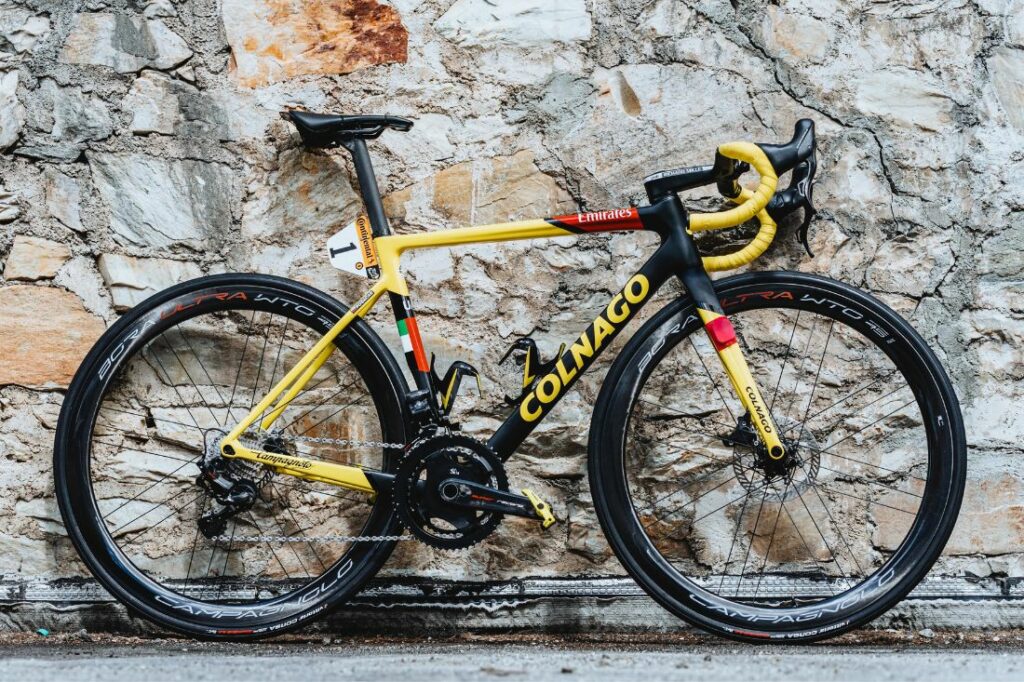
18. Bike technology
To say the bicycle has come a long way from 1903 when the first Tour was run would be a huge understatement. The first Tour de France bikes were built of wood and steel and weighed 40 lbs.
Compare that to the carbon bikes of today that are feather-light at 15 lbs.
19. It’s getting hot
The Tour de France is getting hotter and hotter each year causing concern for the future of the July tradition. In 2019, during the stages in the south of France, the air temperature was 40°C (104°F) and the temperature on the road surface was a scorching 60°C (140°F).
20. Equality in sport
Are you wondering if there ever was a Tour de France for women? In fact, a women’s race was attempted between 1984-1989 but largely went unnoticed.
The good news: 2022 saw a new race for women, the Tour de France Femmes. And it was a huge success too!
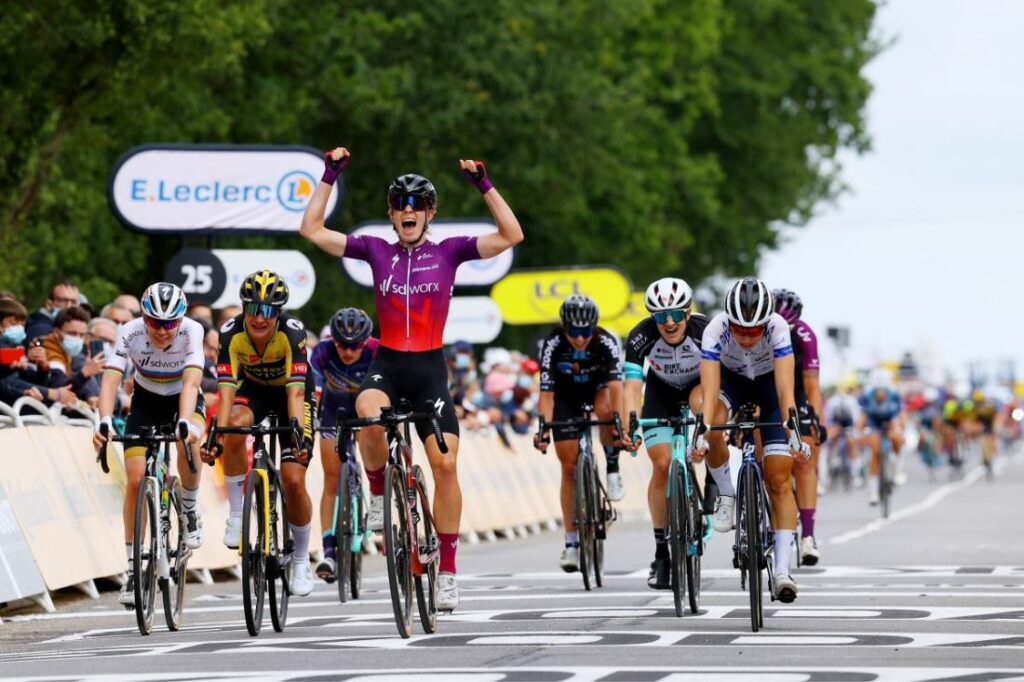
21. Quick Tour de France facts
Over 800 tires blow out every year at the Tour de France. The average cost of each Tour de France bike is between $13,000-$17,000. The country to win the most Tour de France titles, unsurprisingly, is France with 36.
22. Young and old
The oldest stage winner in the Tour’s history was Pino Cerami who won Stage 9 during the 1963 race at 41 years and 65 days.
The youngest stage winner was Fabio Battesini way back in 1931, when he won a stage at just 19 years and 134 days.

23. Postponed race
In 2020, during the COVID pandemic, the Tour de France was postponed until late September. In these untraditional circumstances, Tadej Pogacar of Slovenia was the winner.
At 21-years old, Pogacar is the second youngest winner in Tour de France history. Oh, by the way, he won again in 2021.
Who wants more fun facts?

If you’re looking for some recommendations, these are a few of our favorite fact books to buy. We use these when planning fun trivia nights with family and friends!
We really hope you enjoyed all our fun facts about the Tour de France! Did you learn something new?
If there’s any we missed, you can let us know in the comments below and we’ll add them to this article!


